Jinwoo Choi
ESSENTIAL: Episodic and Semantic Memory Integration for Video Class-Incremental Learning
Aug 14, 2025Abstract:In this work, we tackle the problem of video classincremental learning (VCIL). Many existing VCIL methods mitigate catastrophic forgetting by rehearsal training with a few temporally dense samples stored in episodic memory, which is memory-inefficient. Alternatively, some methods store temporally sparse samples, sacrificing essential temporal information and thereby resulting in inferior performance. To address this trade-off between memory-efficiency and performance, we propose EpiSodic and SEmaNTIc memory integrAtion for video class-incremental Learning (ESSENTIAL). ESSENTIAL consists of episodic memory for storing temporally sparse features and semantic memory for storing general knowledge represented by learnable prompts. We introduce a novel memory retrieval (MR) module that integrates episodic memory and semantic prompts through cross-attention, enabling the retrieval of temporally dense features from temporally sparse features. We rigorously validate ESSENTIAL on diverse datasets: UCF-101, HMDB51, and Something-Something-V2 from the TCD benchmark and UCF-101, ActivityNet, and Kinetics-400 from the vCLIMB benchmark. Remarkably, with significantly reduced memory, ESSENTIAL achieves favorable performance on the benchmarks.
Universal Domain Adaptation for Semantic Segmentation
May 28, 2025Abstract:Unsupervised domain adaptation for semantic segmentation (UDA-SS) aims to transfer knowledge from labeled source data to unlabeled target data. However, traditional UDA-SS methods assume that category settings between source and target domains are known, which is unrealistic in real-world scenarios. This leads to performance degradation if private classes exist. To address this limitation, we propose Universal Domain Adaptation for Semantic Segmentation (UniDA-SS), achieving robust adaptation even without prior knowledge of category settings. We define the problem in the UniDA-SS scenario as low confidence scores of common classes in the target domain, which leads to confusion with private classes. To solve this problem, we propose UniMAP: UniDA-SS with Image Matching and Prototype-based Distinction, a novel framework composed of two key components. First, Domain-Specific Prototype-based Distinction (DSPD) divides each class into two domain-specific prototypes, enabling finer separation of domain-specific features and enhancing the identification of common classes across domains. Second, Target-based Image Matching (TIM) selects a source image containing the most common-class pixels based on the target pseudo-label and pairs it in a batch to promote effective learning of common classes. We also introduce a new UniDA-SS benchmark and demonstrate through various experiments that UniMAP significantly outperforms baselines. The code is available at \href{https://github.com/KU-VGI/UniMAP}{this https URL}.
Dynamic Contrastive Skill Learning with State-Transition Based Skill Clustering and Dynamic Length Adjustment
Apr 21, 2025Abstract:Reinforcement learning (RL) has made significant progress in various domains, but scaling it to long-horizon tasks with complex decision-making remains challenging. Skill learning attempts to address this by abstracting actions into higher-level behaviors. However, current approaches often fail to recognize semantically similar behaviors as the same skill and use fixed skill lengths, limiting flexibility and generalization. To address this, we propose Dynamic Contrastive Skill Learning (DCSL), a novel framework that redefines skill representation and learning. DCSL introduces three key ideas: state-transition based skill representation, skill similarity function learning, and dynamic skill length adjustment. By focusing on state transitions and leveraging contrastive learning, DCSL effectively captures the semantic context of behaviors and adapts skill lengths to match the appropriate temporal extent of behaviors. Our approach enables more flexible and adaptive skill extraction, particularly in complex or noisy datasets, and demonstrates competitive performance compared to existing methods in task completion and efficiency.
PCBEAR: Pose Concept Bottleneck for Explainable Action Recognition
Apr 17, 2025Abstract:Human action recognition (HAR) has achieved impressive results with deep learning models, but their decision-making process remains opaque due to their black-box nature. Ensuring interpretability is crucial, especially for real-world applications requiring transparency and accountability. Existing video XAI methods primarily rely on feature attribution or static textual concepts, both of which struggle to capture motion dynamics and temporal dependencies essential for action understanding. To address these challenges, we propose Pose Concept Bottleneck for Explainable Action Recognition (PCBEAR), a novel concept bottleneck framework that introduces human pose sequences as motion-aware, structured concepts for video action recognition. Unlike methods based on pixel-level features or static textual descriptions, PCBEAR leverages human skeleton poses, which focus solely on body movements, providing robust and interpretable explanations of motion dynamics. We define two types of pose-based concepts: static pose concepts for spatial configurations at individual frames, and dynamic pose concepts for motion patterns across multiple frames. To construct these concepts, PCBEAR applies clustering to video pose sequences, allowing for automatic discovery of meaningful concepts without manual annotation. We validate PCBEAR on KTH, Penn-Action, and HAA500, showing that it achieves high classification performance while offering interpretable, motion-driven explanations. Our method provides both strong predictive performance and human-understandable insights into the model's reasoning process, enabling test-time interventions for debugging and improving model behavior.
CA^2ST: Cross-Attention in Audio, Space, and Time for Holistic Video Recognition
Mar 30, 2025
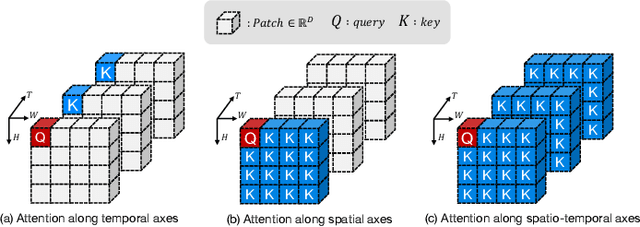

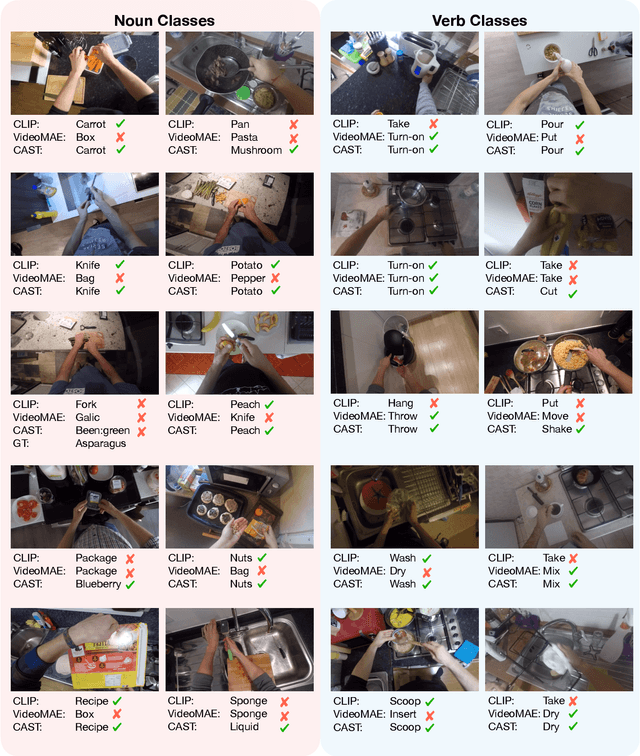
Abstract:We propose Cross-Attention in Audio, Space, and Time (CA^2ST), a transformer-based method for holistic video recognition. Recognizing actions in videos requires both spatial and temporal understanding, yet most existing models lack a balanced spatio-temporal understanding of videos. To address this, we propose a novel two-stream architecture, called Cross-Attention in Space and Time (CAST), using only RGB input. In each layer of CAST, Bottleneck Cross-Attention (B-CA) enables spatial and temporal experts to exchange information and make synergistic predictions. For holistic video understanding, we extend CAST by integrating an audio expert, forming Cross-Attention in Visual and Audio (CAVA). We validate the CAST on benchmarks with different characteristics, EPIC-KITCHENS-100, Something-Something-V2, and Kinetics-400, consistently showing balanced performance. We also validate the CAVA on audio-visual action recognition benchmarks, including UCF-101, VGG-Sound, KineticsSound, and EPIC-SOUNDS. With a favorable performance of CAVA across these datasets, we demonstrate the effective information exchange among multiple experts within the B-CA module. In summary, CA^2ST combines CAST and CAVA by employing spatial, temporal, and audio experts through cross-attention, achieving balanced and holistic video understanding.
MASH-VLM: Mitigating Action-Scene Hallucination in Video-LLMs through Disentangled Spatial-Temporal Representations
Mar 20, 2025
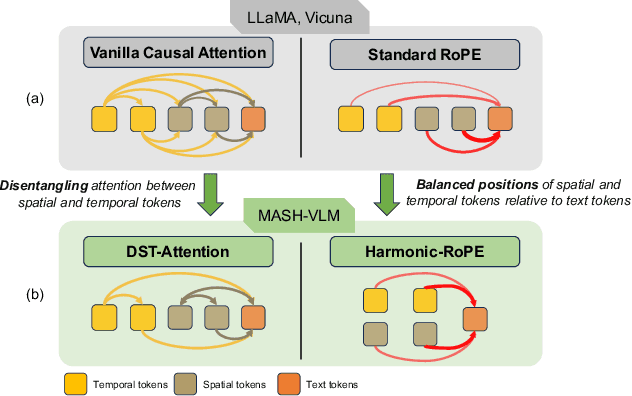
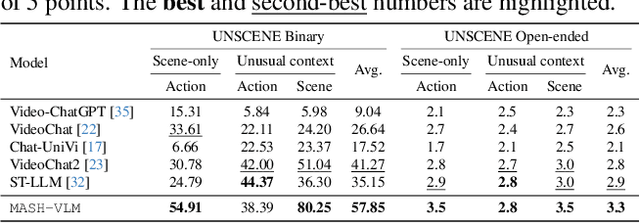
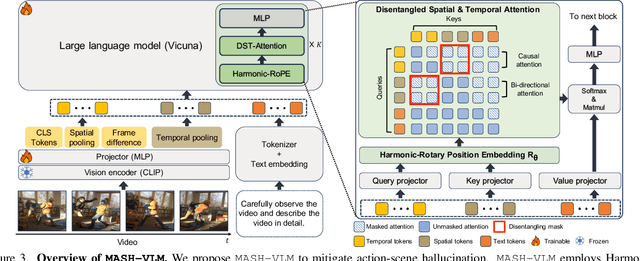
Abstract:In this work, we tackle action-scene hallucination in Video Large Language Models (Video-LLMs), where models incorrectly predict actions based on the scene context or scenes based on observed actions. We observe that existing Video-LLMs often suffer from action-scene hallucination due to two main factors. First, existing Video-LLMs intermingle spatial and temporal features by applying an attention operation across all tokens. Second, they use the standard Rotary Position Embedding (RoPE), which causes the text tokens to overemphasize certain types of tokens depending on their sequential orders. To address these issues, we introduce MASH-VLM, Mitigating Action-Scene Hallucination in Video-LLMs through disentangled spatial-temporal representations. Our approach includes two key innovations: (1) DST-attention, a novel attention mechanism that disentangles the spatial and temporal tokens within the LLM by using masked attention to restrict direct interactions between the spatial and temporal tokens; (2) Harmonic-RoPE, which extends the dimensionality of the positional IDs, allowing the spatial and temporal tokens to maintain balanced positions relative to the text tokens. To evaluate the action-scene hallucination in Video-LLMs, we introduce the UNSCENE benchmark with 1,320 videos and 4,078 QA pairs. Extensive experiments demonstrate that MASH-VLM achieves state-of-the-art results on the UNSCENE benchmark, as well as on existing video understanding benchmarks.
The Geometry of Optimal Gait Families for Steering Kinematic Locomoting Systems
Feb 24, 2025Abstract:Motion planning for locomotion systems typically requires translating high-level rigid-body tasks into low-level joint trajectories-a process that is straightforward for car-like robots with fixed, unbounded actuation inputs but more challenging for systems like snake robots, where the mapping depends on the current configuration and is constrained by joint limits. In this paper, we focus on generating continuous families of optimal gaits-collections of gaits parameterized by step size or steering rate-to enhance controllability and maneuverability. We uncover the underlying geometric structure of these optimal gait families and propose methods for constructing them using both global and local search strategies, where the local method and the global method compensate each other. The global search approach is robust to nonsmooth behavior, albeit yielding reduced-order solutions, while the local search provides higher accuracy but can be unstable near nonsmooth regions. To demonstrate our framework, we generate optimal gait families for viscous and perfect-fluid three-link swimmers. This work lays a foundation for integrating low-level joint controllers with higher-level motion planners in complex locomotion systems.
HiCM$^2$: Hierarchical Compact Memory Modeling for Dense Video Captioning
Dec 19, 2024



Abstract:With the growing demand for solutions to real-world video challenges, interest in dense video captioning (DVC) has been on the rise. DVC involves the automatic captioning and localization of untrimmed videos. Several studies highlight the challenges of DVC and introduce improved methods utilizing prior knowledge, such as pre-training and external memory. In this research, we propose a model that leverages the prior knowledge of human-oriented hierarchical compact memory inspired by human memory hierarchy and cognition. To mimic human-like memory recall, we construct a hierarchical memory and a hierarchical memory reading module. We build an efficient hierarchical compact memory by employing clustering of memory events and summarization using large language models. Comparative experiments demonstrate that this hierarchical memory recall process improves the performance of DVC by achieving state-of-the-art performance on YouCook2 and ViTT datasets.
Geometric Optimal Control of Mechanical Systems with Gravitational and Resistive Force
Oct 12, 2024Abstract:Optimal control plays a crucial role in numerous mechanical and robotic applications. Broadly, optimal control methods are divided into direct methods (which optimize trajectories directly via discretization) and indirect methods (which transform optimality conditions into equations that guarantee optimal trajectories). While direct methods could mask geometric insights into system dynamics due to discretization, indirect methods offer a deeper understanding of the system's geometry. In this paper, we propose a geometric framework for understanding optimal control in mechanical systems, focusing on the combined effects of inertia, drag, and gravitational forces. By modeling mechanical systems as configuration manifolds equipped with kinetic and drag metrics, alongside a potential field, we explore how these factors influence trajectory optimization. We derive optimal control equations incorporating these effects and apply them to two-link and UR5 robotic manipulators, demonstrating how manifold curvature and resistive forces shape optimal trajectories. This work offers a comprehensive geometric approach to optimal control, with broad applications to robotic systems.
PCEvE: Part Contribution Evaluation Based Model Explanation for Human Figure Drawing Assessment and Beyond
Sep 26, 2024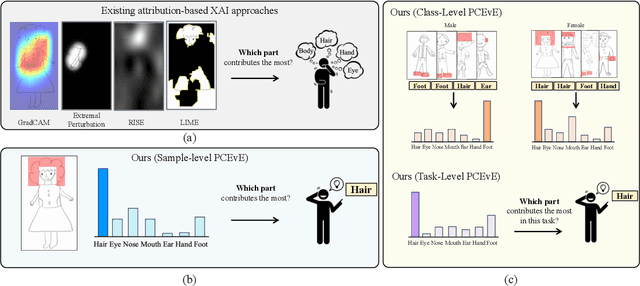

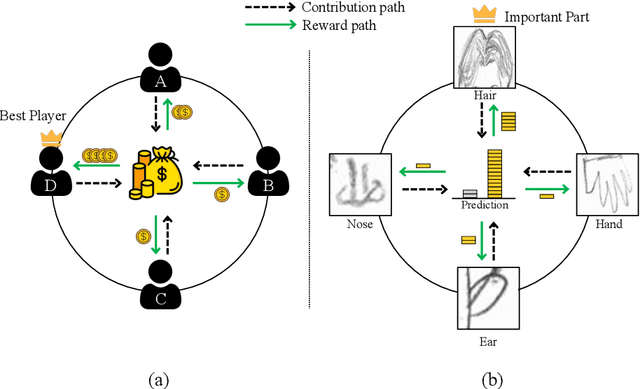
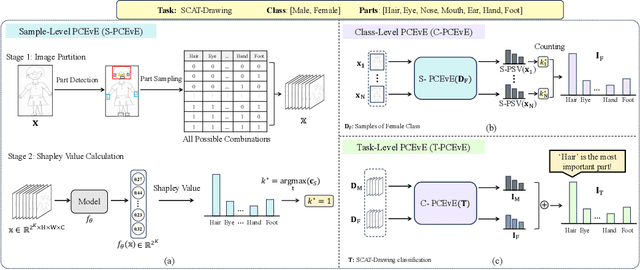
Abstract:For automatic human figure drawing (HFD) assessment tasks, such as diagnosing autism spectrum disorder (ASD) using HFD images, the clarity and explainability of a model decision are crucial. Existing pixel-level attribution-based explainable AI (XAI) approaches demand considerable effort from users to interpret the semantic information of a region in an image, which can be often time-consuming and impractical. To overcome this challenge, we propose a part contribution evaluation based model explanation (PCEvE) framework. On top of the part detection, we measure the Shapley Value of each individual part to evaluate the contribution to a model decision. Unlike existing attribution-based XAI approaches, the PCEvE provides a straightforward explanation of a model decision, i.e., a part contribution histogram. Furthermore, the PCEvE expands the scope of explanations beyond the conventional sample-level to include class-level and task-level insights, offering a richer, more comprehensive understanding of model behavior. We rigorously validate the PCEvE via extensive experiments on multiple HFD assessment datasets. Also, we sanity-check the proposed method with a set of controlled experiments. Additionally, we demonstrate the versatility and applicability of our method to other domains by applying it to a photo-realistic dataset, the Stanford Cars.
 Add to Chrome
Add to Chrome Add to Firefox
Add to Firefox Add to Edge
Add to Edge